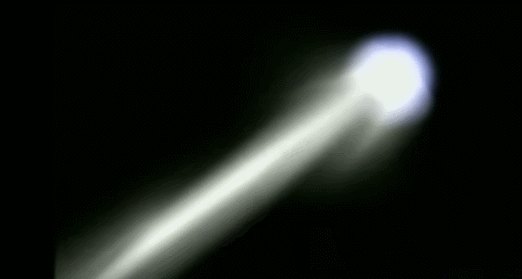


Comets are icy bodies in space that release gas or dust. They are often compared to dirty snowballs, though recent research has led some scientists to call them snowy dirtballs. Comets contain dust, ice, carbon dioxide, ammonia, methane and more. Astronomers think comets are leftovers from the material that initially formed the solar system about 4.6 billion years ago.
HALLEY'S COMET
Halley’s Comet is the most famous of all comets. British astronomer Edmund Halley was the first to realise that comets are periodic, after observing it in 1682 and tallying it to records of two previous comet appearances. He correctly predicted it would return in 1757. The comet is also though to be depicted in the 1066 Bayeux Tapestry.


When the comet was discovered in 1993, it already had been torn into more than 20 pieces traveling around the planet in a two year orbit. Further observations revealed the comet (believed to be a single body at the time) had made a close approach to Jupiter in July 1992 and was torn apart by tidal forces resulting from planet's powerful gravity.
COMET SHOE MAKER
Comet Naming
Comets come in several categories. The most common are periodic and non-periodic.
In the past, comets were named for their discoverers, such as Comet Halley for Sir Edmond Halley. In modern times, comet names are governed by rules set forth by the International Astronomical Union (IAU). A comet is given an official designation, and can also be identified by the last names of up to three independent discoverers.
Here’s how it works. Once a comet has been confirmed, the following naming rules are followed. First, if the comet is a periodic comet, then it is indicated with a P/ followed by the year of its discovery, a letter indicating the half-month in which it was discovered, followed by a number indicating its order of discovery. So, for example, the second periodic comet found in the first half of January, 2015 would be called P/2015 A2.
A non-periodic comet would be indicated with a C/ followed by the year of its discovery, a letter indicating the half-month in which it was discovered, followed by a number indicating its order of discovery.
If a comet is independently discovered by three people named Smith, Jones, and Petersen, it could also be called Comet Smith-Jones-Petersen, in addition to its formal designation. Today, many comets are found through automated instrument searches, and so the formal designations are more commonly used.